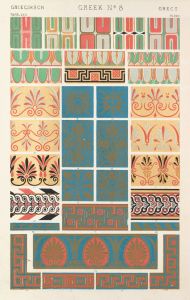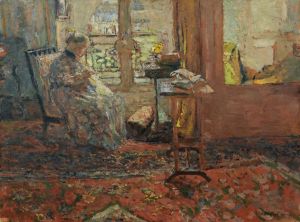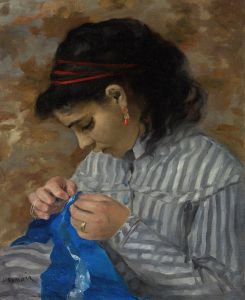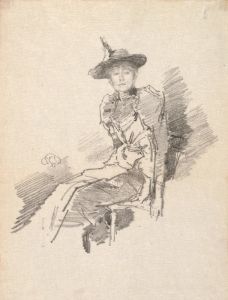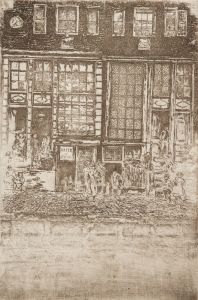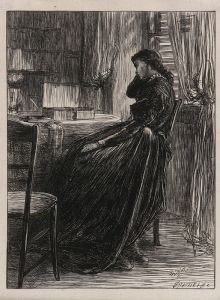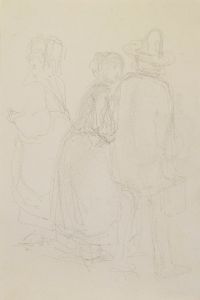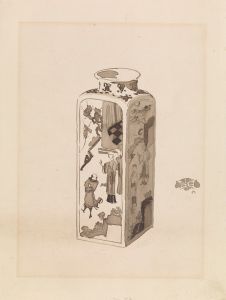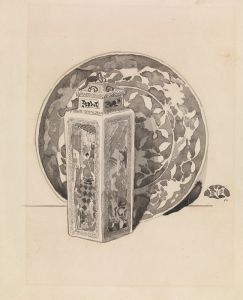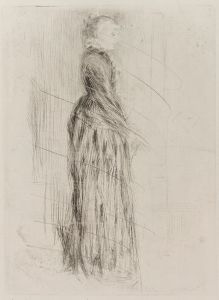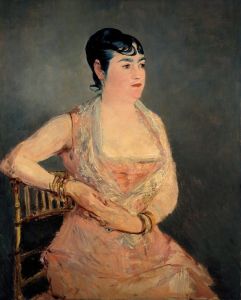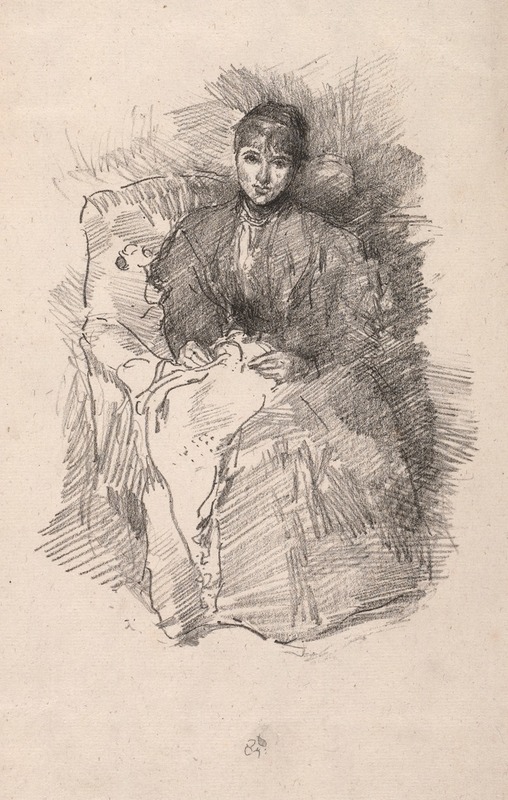
Needlework
A hand-painted replica of James Abbott McNeill Whistler’s masterpiece Needlework, meticulously crafted by professional artists to capture the true essence of the original. Each piece is created with museum-quality canvas and rare mineral pigments, carefully painted by experienced artists with delicate brushstrokes and rich, layered colors to perfectly recreate the texture of the original artwork. Unlike machine-printed reproductions, this hand-painted version brings the painting to life, infused with the artist’s emotions and skill in every stroke. Whether for personal collection or home decoration, it instantly elevates the artistic atmosphere of any space.
James Abbott McNeill Whistler was an American artist known for his paintings, etchings, and lithographs. He was a leading figure in the Aesthetic Movement, which emphasized the visual and sensual qualities of art and design over practical, moral, or narrative considerations. Whistler's work is characterized by its subtle tonal variations and innovative compositions.
"Needlework" is one of Whistler's lesser-known works, and there is limited information available about this specific painting. Whistler's oeuvre often includes portraits and scenes that capture the essence of his subjects with a delicate and refined touch. His approach to art was heavily influenced by his belief in "art for art's sake," a philosophy that suggests art should be appreciated for its beauty and form rather than its narrative content.
Whistler's most famous works include "Arrangement in Grey and Black No. 1," commonly known as "Whistler's Mother," and "Nocturne in Black and Gold: The Falling Rocket." These works demonstrate his mastery of composition and his ability to convey mood and atmosphere through color and form. While "Needlework" may not be as widely recognized, it likely shares the same attention to detail and aesthetic principles found in his more famous pieces.
Whistler was born in Lowell, Massachusetts, in 1834 and spent much of his early life in Russia and England. He studied art in Paris, where he was influenced by the Realist movement and the works of Gustave Courbet. Whistler's style evolved over time, incorporating elements of Japanese art, which was becoming popular in Europe during the late 19th century. This influence is evident in his use of asymmetrical compositions and his focus on harmony and balance.
Throughout his career, Whistler was known for his strong personality and his sometimes controversial views on art. He was involved in several high-profile legal battles, most notably with the art critic John Ruskin, who accused Whistler of "flinging a pot of paint in the public's face" with his abstract works. Whistler won the case but was awarded only a token sum, which did little to offset his legal expenses.
Despite these challenges, Whistler's reputation as an innovative and influential artist continued to grow. He was a member of the Royal Academy of Arts and received numerous accolades for his contributions to the art world. His work has been exhibited in major museums and galleries around the world, and he remains an important figure in the history of art.
In summary, while specific details about "Needlework" by James Abbott McNeill Whistler are scarce, the painting is part of a larger body of work that reflects his commitment to aesthetic principles and his innovative approach to art. Whistler's legacy as a pioneer of the Aesthetic Movement and a master of composition and color continues to be celebrated today.






